This article was co-authored by Lisa Bryant, ND. Dr. Lisa Bryant is Licensed Naturopathic Physician and natural medicine expert based in Portland, Oregon. She earned a Doctorate of Naturopathic Medicine from the National College of Natural Medicine in Portland, Oregon and completed her residency in Naturopathic Family Medicine there in 2014.
There are 11 references cited in this article, which can be found at the bottom of the page.
wikiHow marks an article as reader-approved once it receives enough positive feedback. In this case, 87% of readers who voted found the article helpful, earning it our reader-approved status.
This article has been viewed 261,325 times.
Keloid scars are a growth of more than normal scar tissues and can be caused by acne, burns, piercings, surgery, vaccinations, and even from minor scratches or cuts. They can be flesh colored, red, or pink, and they are often lumpy or have ridges of extra tissue. Keloid scars are not necessarily painful but can be irritated by clothing or any rubbing. Individuals with darker skin tend to be more prone to keloid formation, but men and women are about equally affected.[1] Surgical therapies for treating keloids can be expensive, so you may want to try taking steps at home before consulting your doctor.
Steps
Reducing the Appearance of Keloid Scars at Home
-
1Keep the skin clean and moisturized. Good skin care is essential in the treatment of any skin condition, and keloids are no exception. Keeping your skin clean and moisturized will encourage skin rejuvenation — this means that the older, scarred skin will be sloughed away and replaced with the newer, smoother layers underneath.
- Wash the scarred skin at least once a day (twice if it's on your face) with a gentle cleanser that contains no colors or fragrances. Be sure not to over wash the skin, however, as this can dry it out and cause irritation.
- Moisturize the skin after cleansing to keep it hydrated. You can use a gentle store-bought moisturizer or apply a natural oil such as coconut or olive oil.[2]
-
2Wear suntan lotion every day to avoid damaging the skin. Scarred skin is particularly sensitive, making it prone to burning and hyperpigmentation caused by the the harmful rays of the sun. As a result, it is important to apply suntan lotion to keloid scars if you intend to spend any time outside throughout the day.
- Use a high SPF of thirty or above, and remember to apply it to the skin at least thirty minutes before going outside.
- The sun's rays can be damaging on the skin, even when it's not hot or sunny outside. Therefore, it's important to apply suntan lotion regardless of the weather.
Advertisement -
3Don't pick at the scars. When you have a cut or small scar on the skin, it can be very tempting to pick at it. However, this is a bad idea as it often leads to infection and the formation of keloid scars.
- Try to leave any cuts alone to prevent the formation of keloids and avoid touching any existing keloids, as this can simply aggravate them further.
- If you leave your scars alone, there's a good chance that they will disappear on their own over time, without the need for medical intervention.
-
4Use an organic scar cream that contains onion extract. Recent studies have shown promising data with scar creams that contain onion extract when it comes to reducing the height of scar tissue.[3] This product will also work in helping to prevent raised scar tissue if you apply it to a healing tissue injury that you fear may develop a keloid.[4]
-
5Apply lemon juice to lighten scars. You can apply lemon juice to darker scars in order to lighten them. Vitamin C is important in normal wound healing, and the high concentration of vitamin C in lemon juice can help lighten scars.[5] Use a cotton ball soaked in lemon juice and apply directly to the scar. Allow the lemon juice to air dry and rinse with warm water. Repeat once a day.
- Be aware that exposing the lemon-juice treated skin to sunlight may result in bleaching.
- While most steps described later in this method can be used in conjunction, do not try mixing lemon juice with other remedies. If you want to use other methods that you apply to the scar concurrently, then rinse off the lemon juice and wait two to three hours beforehand.
-
6Use castor oil to break down scar tissue and detoxify the skin. Castor oil has the ability to penetrate deep into the skin and slowly break down scar tissue. In healthy skin cells, it helps to increase circulation and eliminate toxins.
- To treat keloids, soak a piece of clean cloth in castor oil and press it onto the keloid for an hour or two every day. Alternatively, you can just rub castor oil directly onto the keloid everyday.
- You may also use castor oil to prevent keloid formation in the first place by applying the oil directly onto cuts or scrapes. This promotes better healing.
-
7Massage aloe vera into the scar to soften the tissue. Aloe vera has been shown to help reduce the appearance of burn scars, and you can safely try it to reduce the appearance of a keloid as well.[6] Aloe vera is an anti-inflammatory herb. The reduction of inflammation, especially during the early stages of scar formation may be important for increasing the elasticity of the new tissue.
-
8Place green tea bags on the scar. Researchers believe that green tea may reduce scarring because of its antioxidant activity.[7] Steep a bag of organic green tea in warm water. Use the tea bag directly on the scar three to four times a day for ten or fifteen minutes.
- You can also soak a cotton towel in green tea, squeeze out the excess, and place over the scar three or four times a day for ten to fifteen minutes.
-
9Try vitamins E and D. Both vitamins E and D have been used to improve the appearance of scars.[8] For either option, open a liquid caplet of the vitamin, mix the contents with four to five drops of castor oil, and massage the liquid into the skin of the scar three to four times a day.
- For vitamin E, use a liquid caplet containing 400 IU.
- For vitamin D, use a liquid caplet that contains up to 2,000 IU.
-
10Apply lavender oil. Lavender oil has traditional uses for helping to reduce scars.[9] Mix two to three drops of lavender oil with two tablespoons of castor oil and massage the mix into your scar. Repeat three to four times each day.
-
11Massage a mix of St. John’s wort and castor oil into the scar. St. John’s wort promotes wound healing and has especially been used to reduce scarring from C-sections.[10] Mix two to three drops of the essential oil with two tablespoons of castor oil and massage the ointment into your scar. You can repeat this treatment three to four times daily.
-
12Use apple cider vinegar to reduce redness. Apple cider vinegar (not white vinegar) is commonly recommended to help reduce redness associated with keloid scars. Consistent use may also help reduce the size of scars. Apply the vinegar directly to the scar and allow it to air dry. Rinse the area with warm water after five to ten minutes. You can repeat this process three to four times a day.
-
13Apply honey to the scar. Honey is a natural moisturizer that has shown some promise in reducing the size of keloids.[11] Apply a thin layer of honey directly to the scar. Massage the honey into the scar for five minutes. Allow it to sit for an hour before rinsing off the honey.
- Manuka honey or Tualang honey is generally recommended for medicinal use.
- You can cover the honey with gauze to help prevent it from sticking to clothing.
-
14Use Radix arnebiae. This herb has been used in Traditional Chinese Medicine (TCM) for centuries to reduce scarring. Recent studies have indicated that it can reduce the numbers and functions of scar-forming cells.[12] To use the powder, mix half a teaspoon of the powder or one-quarter teaspoon of the concentrated herb with one to two tablespoons of castor oil. Massage the mixture into the scar tissue three to four times a day.
- You may have to go to a local TCM practitioner in your area to find this herb.
-
15Try a variety of methods. Many of these methods can take several months to produce a significant difference in reducing the appearance of your keloid scars. You can try using several of these methods at a time to help increase the chances of reducing your scar.
- If you do prefer using the methods one at a time to determine which is most effective, then try the method for at least two to three weeks. If there is no change, move to another method or consider consulting your doctor about a medical procedure for removing your keloid.
Seeing Your Doctor
-
1Consult your doctor. If none of the natural methods help to reduce your keloid scar tissue, then the next step is to consult your doctor for a professional medical solution.
-
2Ask about a corticosteroid injection. The most common solution for small and newer keloid scars is an injection of corticosteroids (intralesional triamcinolone acetonide), which reduce the synthesis of the keloid tissue.[13] Your individual scar may react different to the treatment, but the average process requires three to four injections over the course of a month.[14]
-
3Ask about cryotherapy. Your doctor may suggest cryotherapy (freezing of the tissue) in conjunction with the injections. Cryotherapy damages the keloid tissue and helps lead to necrosis (death) of the keloid tissue to break it down faster than the corticosteroid injections alone.[15] You can expect three to six sessions of cryotherapy for an average keloid scar.[16]
- A cryoneedle is a recent innovation to this technique that your doctor may suggest. This specialized needle allows your doctor to inject liquid nitrogen into the tissue as opposed to simply applying it to the top of the tissue. This can quicken the process.[17]
-
4Look into 5-FU treatment. Another option that is commonly used in association with corticosteroid injections is 5-FU, which is a drug that inhibits fibroblast cells (important cells in the process of healing wounded tissue) in such a way as to reduce keloids.[18]
-
5Ask about laser therapy options. Laser therapy options are becoming increasingly common in the treatment of keloid scars. The laser is used to break down the capillaries that feed the keloid tissue and to alter the production of collagen in the area around the tissue.[19] Anywhere from two to six laser therapy treatments can vastly improve the color, height, and texture of a keloid scar.[20]
-
6Look into excision of the keloid. Depending on the height and area of the keloid, your doctor may also suggest excision (cutting away) of the tissue. This is usually only proposed for keloids more than one year old since the tissue can often flatten by itself over this time period. Excision of the keloid would result in a fresh wound that requires specific care to help avoid the potential for another keloid developing.[21] Always follow the exact care instructions provided by your surgeon to help heal any wound with the best achievable results.
References
- ↑ http://www.aocd.org/?page=KeloidsAndHypertroph
- ↑ http://www.healthline.com/health/keloids#Treatment
- ↑ http://www.ncbi.nlm.nih.gov/pmc/articles/PMC3639020/
- ↑ http://www.ncbi.nlm.nih.gov/pmc/articles/PMC3639020/
- ↑ Moores, J. (2013). Vitamin C: a wound healing perspective. British Journal Of Community Nursing, 18S6-s11.
- ↑ Topical Application of Aloe vera Accelerated Wound Healing, Modeling, and Remodeling: An Experimental Study With Significant Clinical Value.
- ↑ Sidgwick, G. P., McGeorge, D., & Bayat, A. (2015). A comprehensive evidence-based review on the role of topicals and dressings in the management of skin scarring. Archives Of Dermatological Research, 307(6), 461-477.
- ↑ Martindale, D. (2000). Scar no more. Scientific American, 283(1), 34-36
- ↑ WE ASKED. (2014). Massage Magazine, (213), 88-89.
- ↑ Samadi, S., Khadivzadeh, T., Emami, A., Moosavi, N. S., Tafaghodi, M., & Behnam, H. R. (2010). The effect of Hypericum perforatum on the wound healing and scar of cesarean. Journal Of Alternative And Complementary Medicine (New York, N.Y.), 16(1), 113-117.
- ↑ Al-Waili, N., Salom, K., and Al-Ghamdi, A. A. Honey for wound healing, ulcers, and burns; data supporting its use in clinical practice. ScientificWorldJournal. 2011;11:766-787.
- ↑ Xie, Y., Fan, C., Dong, Y., Lynam, E., Leavesley, D. I., Li, K., & ... Upton, Z. (2015). Functional and mechanistic investigation of Shikonin in scarring. Chemico-Biological Interactions, 22818-27.
- ↑ http://www.ncbi.nlm.nih.gov/pmc/articles/PMC3639020/
- ↑ http://www.ncbi.nlm.nih.gov/pmc/articles/PMC3639020/
- ↑ http://www.ncbi.nlm.nih.gov/pmc/articles/PMC3639020/
- ↑ http://www.ncbi.nlm.nih.gov/pmc/articles/PMC3639020/
- ↑ http://www.ncbi.nlm.nih.gov/pmc/articles/PMC3639020/
- ↑ http://www.ncbi.nlm.nih.gov/pmc/articles/PMC3639020/
- ↑ http://www.ncbi.nlm.nih.gov/pmc/articles/PMC3639020/
- ↑ http://www.ncbi.nlm.nih.gov/pmc/articles/PMC3639020/
- ↑ http://www.ncbi.nlm.nih.gov/pmc/articles/PMC3639020/
About This Article
While you can’t really remove keloid scars by yourself at home, you can lighten them by applying lemon juice on the scars once a day, and letting it air dry before rinsing with warm water. Alternatively, try applying apple cider vinegar to your scars 3-4 times a day and letting it sit for 5-10 minutes before rinsing with warm water. You can also rub castor oil, either on its own or mixed with 2-3 drops of lavender oil, into your keloids 3-4 times a day to help break down the scar tissue over time. For tips from our Medical reviewer on how to reduce the appearance of keloid scars with honey or green tea, read on!
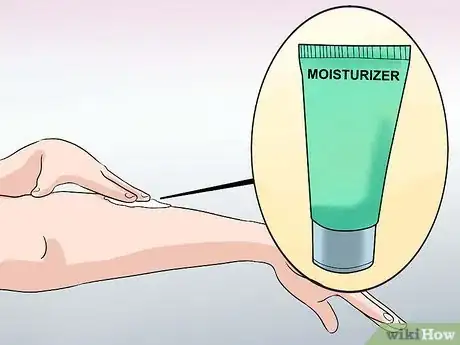
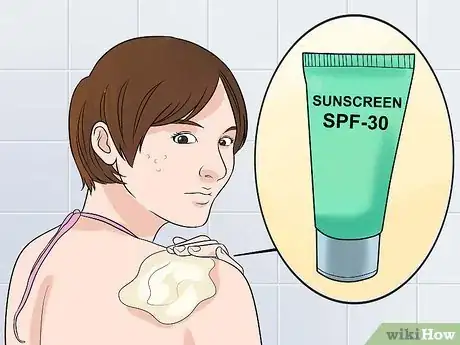
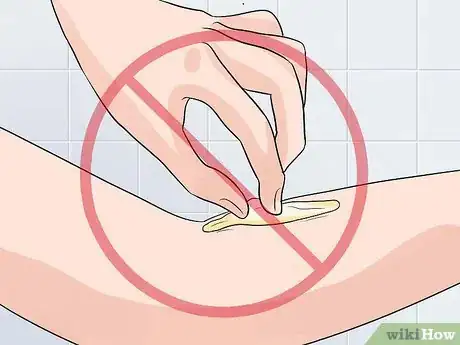
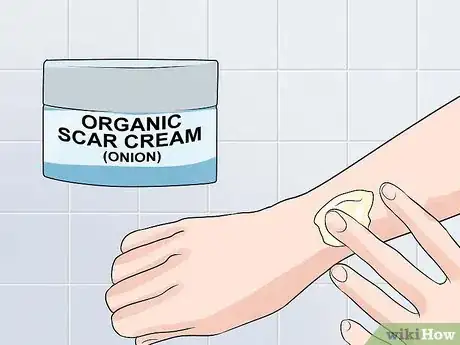
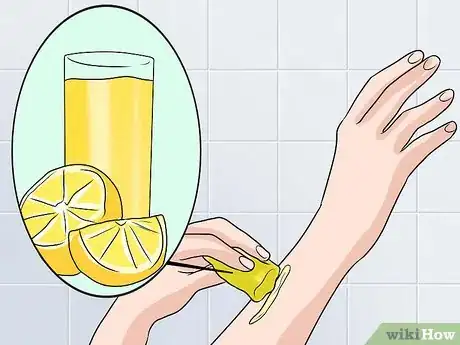
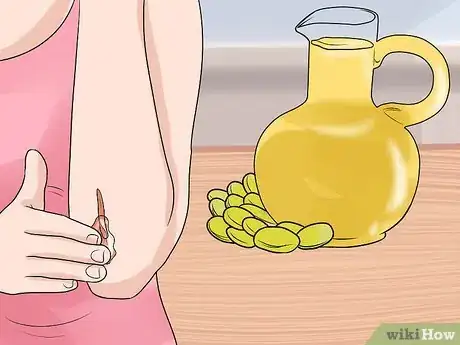
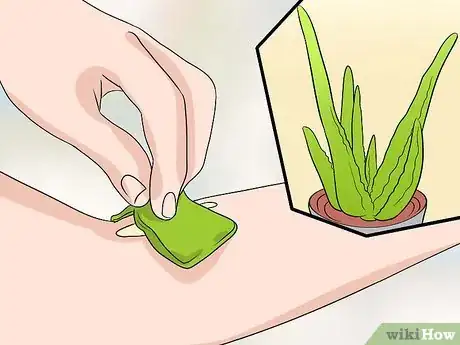

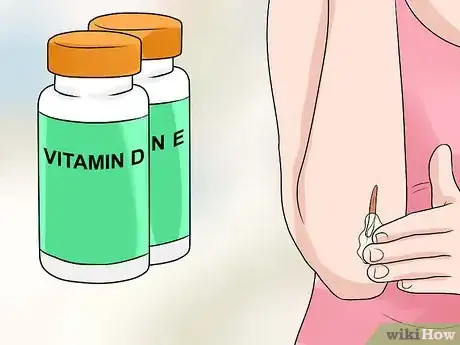
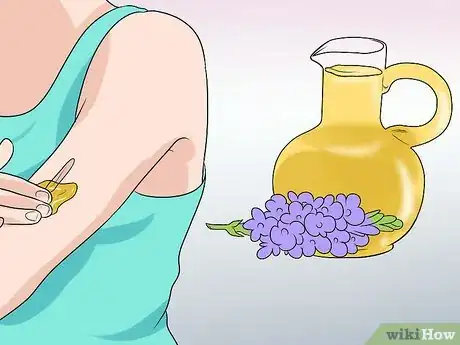
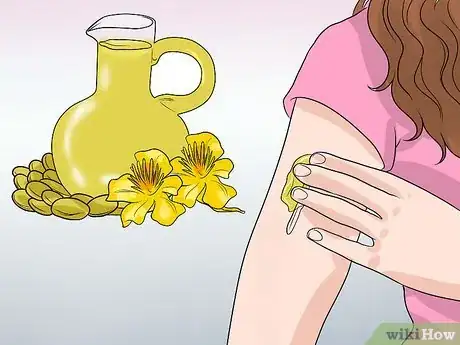
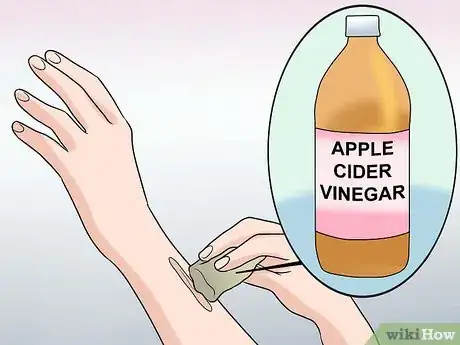
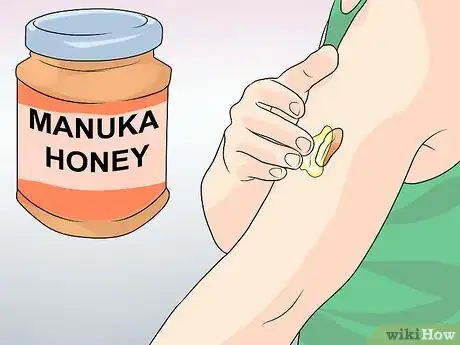
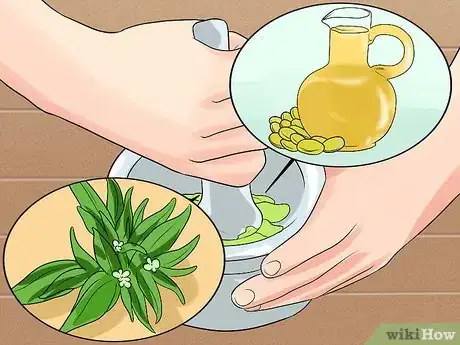
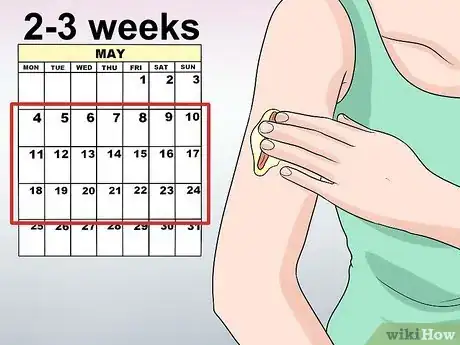
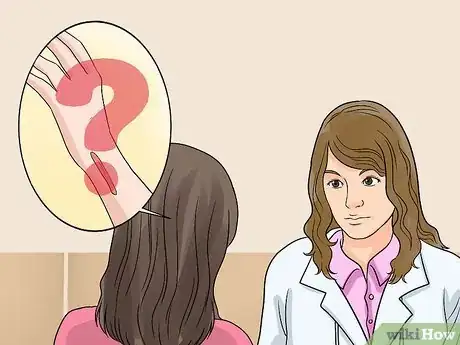
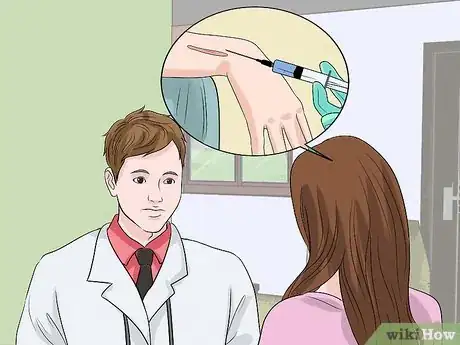
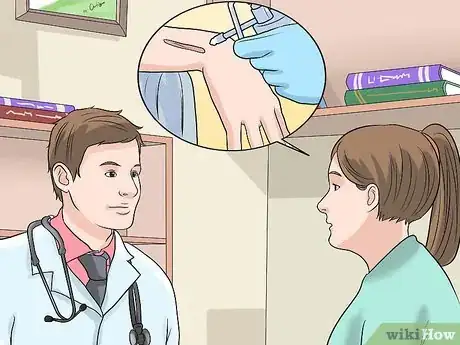
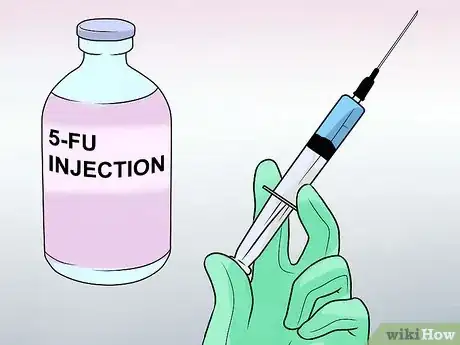

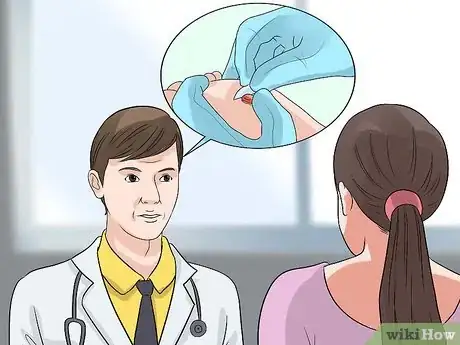



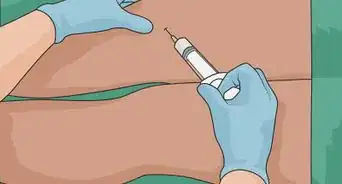


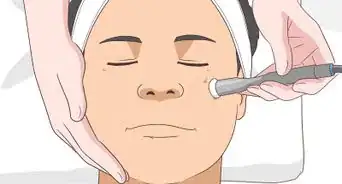
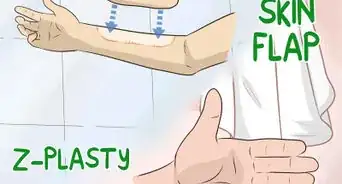


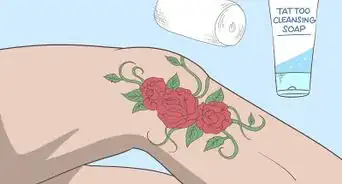













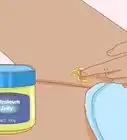
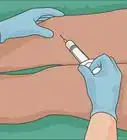



































Medical Disclaimer
The content of this article is not intended to be a substitute for professional medical advice, examination, diagnosis, or treatment. You should always contact your doctor or other qualified healthcare professional before starting, changing, or stopping any kind of health treatment.
Read More...